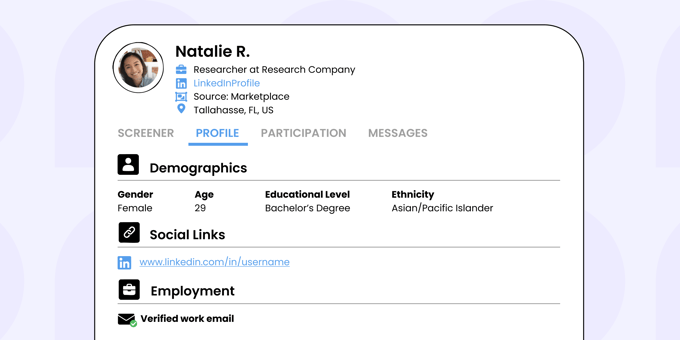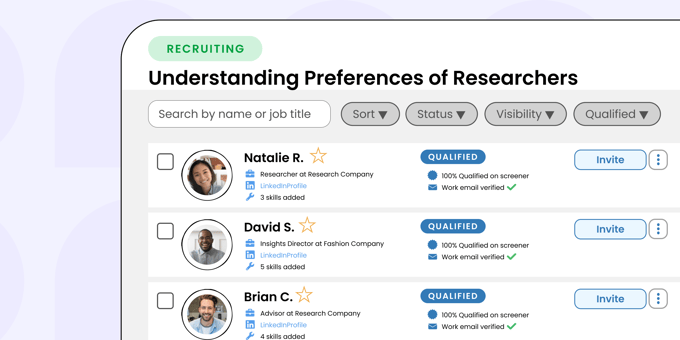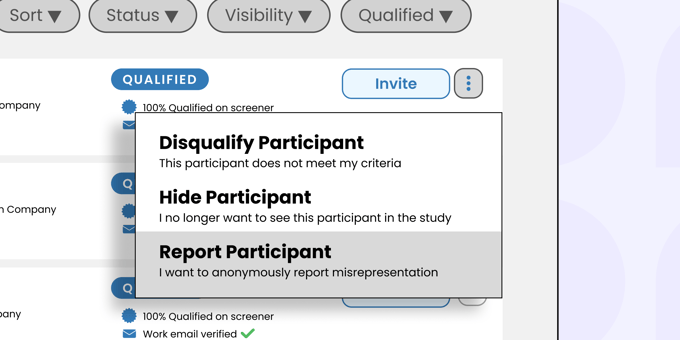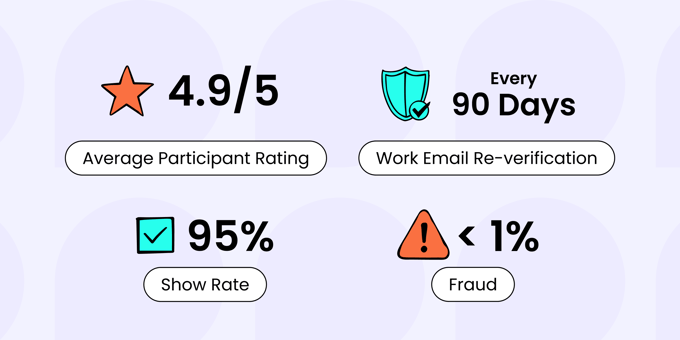Fraud is probably the most frustrating thing you’ll encounter as a researcher.
Hosting a research interview and trying to figure out whether your participant is misrepresenting themself is awkward, confusing, and a huge time sink.
But industry-wide, it’s happening more and more. So why does our panel maintain its industry-low fraud rate of <1%?
It’s because tackling fraud is our number one priority. We never want you to think: “Is this person who they say they are?” A lot of work goes on behind the scenes to build that level of confidence in our participants' quality.
Imagine a duck: calm on the surface, but paddling furiously below.
That’s us. As participant fraud becomes more sophisticated, we’re constantly working behind the scenes to strengthen our defences. Though all you'll notice is the high bar for participant quality and how easy it is to gather meaningful insights.
We think about our approach to fraud in three parts: Prevention, Detection, Response. Let’s dive into what’s involved at each stage.
Prevention
Keeping fake participants out of the panel

We see lots of fraud - but our customers don’t. That’s because we identify most fraud before the fakers make it to our panel.
Behind the scenes, a mix of advanced anti-fraud techniques and common-sense checks ensure we’re only welcoming high-quality participants to our panel.
Detection
Hiding fakers from your participant results page

As always, some bad actors slip through the cracks. But those that do won’t get far. Our second layer of defence comes into play after fraudulent participants apply for projects.
To recap, if a participant trips any of these wires, they are removed before their profile is shared as part of your list of matched participants.
Response
How we react and learn quickly

Even with all the safeguards, we occasionally see localized flare-ups of fraud. When that happens, we move fast to remove the participants and ensure future instances are detected quickly.
The tactics fraudulent participants use to access our panel get more advanced, so the protections we’re building get more advanced too. With more than seven years of fighting fraud under our belt, our panel quality defences have grown to become some of the tightest in the industry.
Fraud will always be our top priority

The quality of our panel means we’re often the go-to choice for researchers looking for high-quality participants for video and voice-based qualitative research.
When fraud appears in these research studies, it’s often pretty obvious. And that’s why you couldn’t run meaningful qual research with low-quality quant panels. As soon as a participant is invited to speak openly, there’s nowhere for them to hide.
Every safeguard, every flag, every fraud review - they all work in the background to make sure you’re having high-quality research sessions with genuine participants. Participants whose insights you trust to help you build better products.
Fraud will always be our top priority because we’ve built our reputation on it.